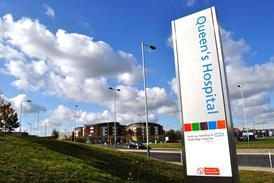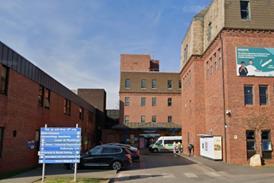Patients want it and the NHS benefits - so how can we move terminally ill people out of hospital? HSJ reports, in association with Marie Curie Cancer Care
There is a compelling case for getting end of life care right and demographic change makes it all the more urgent.
With death rates expected to rise by 17 per cent by 2030, hospitals will find it difficult to cope if, as at the moment, they continue to look after the terminally ill in their last days.
‘It needn’t be the case that so many people die in hospital - Holland has half the hospital death rates we do’
We know that most terminally ill people do not actually want to die in hospital; given the choice, the majority of people would choose to die at home where possible. However, more than half of all deaths in England and Wales take place in hospital.
There is a clear case for change, says Dr Peter Nightingale, joint Royal College of GPs and Marie Curie clinical lead for end of life care.
“End of life care has been a priority for the college for some time and now, with the Health and Social Care Act in England, there’s an opportunity for new commissioners to make a difference.
“There are real wins in improving commissioning of end of life care: wins for GPs, wins for the health economy, and, of course, wins for patients and their families.”
Last year, Dr Nightingale ran seminars to share expertise on how to commission end of life care. “We held six three-hour workshops, which were attended by representatives from between 50 and 60 CCGs - not a bad pick-up rate,” he says.
“GPs are very busy at the moment; there’s a big workload, care is getting more complicated, there are more older people. But however busy they are just now there’s a recognition that it’s going to get busier. Death rates will increase and, if we are to get end of life care right, we can’t keep doing things the same way.”
High hospital death rates
The majority of people still die where they do not want to die, in hospital, he adds. “Hospitals are under pressure too,” he says. “But it needn’t be the case that so many people die in hospital - in Holland they have half the hospital death rates we do.”
The seminars picked up on commissioning recommendations from the King’s Fund which were published last April, he says.
“First, we need to make it easier for people to be discharged from hospital, so we need services to facilitate discharge. We need rapid response services to help people when they come out of hospital, as an alternative to dialling 999. We need access to 24/7 nursing care - and that’s a challenge, when we’re seeing a 30 per cent reduction in numbers of district nurses. And we need to be coordinating care, ideally electronically.
“We’re also trying to get better at having conversations with people at end of life, asking them what they want, and making sure that it’s recorded.”
He says this last point is vital, because if paramedics, for example, don’t know that a terminally ill person has requested not to be resuscitated, then the individual might be subjected to unwanted resuscitation attempts.
Community based end of life care that truly wraps round patient needs is showing admirable results in terms of keeping people out of hospital and helping them to die in the place of their choosing.
Evidence for change
But how do you build a business case for better commissioning of end of life care? There is evidence available, says Michael Cooke, head of analytics at Marie Curie, and there’s more in the pipeline.
He cites a recent independent Nuffield Trust study of 29,000 Marie Curie Nursing Service patients. It found that 77 per cent of Marie Curie patients died at home, compared to 35 per cent in a control group where patients were individually matched to take account of factors such as disease type, age, and previous hospital use.
‘There is robust data that shows that people using the Marie Curie Nursing Service use less hospital care’
The study showed that hospital use was cut considerably in the Marie Curie patients: 12 per cent had an emergency hospital admission while under Marie Curie care, compared to 35 per cent in the individually matched control group, and 8 per cent attended A&E, compared to 29 per cent of the control group.
The study also found financial benefits, with those under the care of Marie Curie nurses typically costing hospitals £1,140 per person less than controls, although these sums have to be considered in a wider context. “There is robust data that shows that people using the Marie Curie Nursing Service use less hospital care,” says Dr Cooke, adding that further work will attempt to fill gaps in knowledge about savings to the healthcare economy more generally.
Higher quality care at home
He says that while quality of care tends to be rated higher by bereaved relatives when patients die at home compared to when they die in hospital, there are areas where people feel an institutional setting performs better. Hospitals, hospices and care homes are rated better than home for pain relief, for example, suggesting that work needs to be done to make all aspects of care at home as effective as the best.
But he points out that the recent Keogh review into trusts with high mortality rates revealed that many were looking after dying patients who could have been at home. “It indicated that some hospitals weren’t making the best use of their resources for patients at the end of life,” he says.
While it’s difficult to make the economic case for giving people the choice of where to die, at least on a macro level, there’s little doubt that it succeeds on a quality and a patient experience level, says Dr Nightingale. And there’s a perfect alignment between what terminally ill people want and what the system needs - to die somewhere other than in hospital.
In addition, it’s not as simple as doing the sums, says Dr Nightingale. “Old traditional figures showed it was twice as expensive to be cared for in hospital than at home at end of life but if you look at this more closely, then you see that, if you’re trying to deliver good care in people’s homes, then you won’t get the economies of scale that you do in hospital.
“But there are other, real benefits. What we do know is that we have to allow hospitals to do what they were set up to do: to take people who are ill and make them better. Hospitals are not places to be cared for at the end of life.”
Jane Collins: On rethinking the end of life
Getting end of life care right benefits terminally ill people and their families, health professionals and the wider health economy. To achieve this, commissioners, providers and professionals need to build partnerships that deliver community based end of life care that truly wraps round patient needs.
With an ageing population and death rates set to rise by 17 per cent between 2012 and 2030, the pressure on hospitals to care for those at the end of their lives will only increase.
Demand will be more complex. People will die at older ages and as people get older they will accumulate multiple conditions. The proportion of deaths among those aged 85 and over is expected to rise from 32 per cent in 2003 to 44 per cent in 2030. This means that end of life care will increasingly involve looking after people with complex health problems.
‘Marie Curie patients used on average £1,140 less hospital care’
There are also financial pressures on health and social care budgets and commissioners will need to find efficiency savings; if things stay the same, hospitals will be unable to cope.
There are viable alternatives to hospital care for those at the end of life. Shifting care from acute to community settings offers positive outcomes. It reduces the demand for expensive and often distressing hospital admissions, while improving the quality of patient care.
However, unless more resources are committed to shifting to a community based model of care we will not be able to reduce hospital costs and improve the quality of care and patient experience.
The Nuffield Trust, commissioned by Marie Curie, undertook a study examining the impact of the Marie Curie Nursing Service on the hospital use and place of death of more than 29,000 Marie Curie patients: 77 per cent of Marie Curie patients died at home, compared to 35 per cent in the control group, with the Marie Curie patients using on average £1,140 less hospital care than the control group.
Given the choice, most of us don’t want to die in hospital anyway. Latest ONS figures for 2012 show that 50 per cent of people die in hospital in England and Wales, yet research by the End of Life Care Intelligence Network found 63 per cent of the public would prefer to die at home.
The case for change is compelling but, if we are to shift more end of life care to the community, services must be integrated and joined up, with the patient at the centre. Working with local NHS partners and other providers to achieve this is a key priority for Marie Curie in the coming years.
Jane Collins is chief executive of Marie Curie Cancer Care



























No comments yet